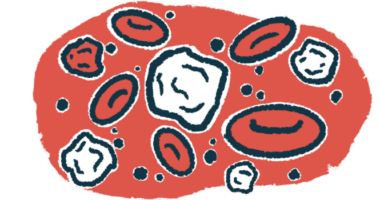Scientists track RDEB’s genetic cause back to Sephardic ancestors
Mutation linked to Iron Age migration of Jewish population to Europe

Scientists traced a common genetic mutation that causes recessive dystrophic epidermolysis bullosa (RDEB) to the Sephardic Jewish population, a group that has roots in Spain and Portugal.
Even so, analysis showed that the RDEB patients who carry the mutation assessed in the study, both in Europe and the Americas, did not have recent Jewish ancestry.
The team proposed that the RDEB-causing mutation arose in a single ancestor during the Iron Age, about 1300 BCE, and circulated among Jewish populations in the Middle East. Around the 10th century, a group of Jewish people with a high prevalence of the mutation migrated to the Iberian Peninsula (Spain and Portugal), where they mixed with local populations.
Following the Spanish Inquisition in the late 15th century, some people with the mutation, including Sephardic individuals, emigrated to other European countries and the Americas.
“We report the most comprehensive study to date of individuals with RDEB carrying a single mutation … with a unique shared history,” the researchers wrote in the study, “Sephardic origins revealed for rare skin disorder, recessive dystrophic epidermolysis bullosa, in individuals carrying the unique c.6527insC mutation,” published in the Journal of Medical Genetics.
Mutation linked to Jewish migration
RDEB is caused by mutations in the COL7A1 gene, which encodes part of type VII collagen, a protein that helps connect and anchor the different layers of the skin. One specific COL7A1 mutation, called c.6527insC, is highly prevalent in RDEB patients and is found in the Americas and in Europe, particularly in Spain.
A study examining RDEB in Hispanic people from the Southwestern U.S., Mexico, Chile, and Colombia suggested a common ancestry for the c.6527insC mutation. The work pointed to an inheritance linked to the migration of Jewish people with roots in the Iberian Peninsula, known as Sephardic Jews.
Historical accounts indicated that around the 10th century, people of Jewish origin migrated from the Middle East to the Iberian Peninsula, where Jewish life flourished. In the late 15th century, however, the Spanish Inquisition — a judicial institution tasked with enforcing Catholic religious law — was established, and most Sephardic Jews emigrated from Spain to other European countries, the Middle East, North Africa, and the Americas.
Many who remained in Spain during the Inquisition converted to Catholicism but continued to practice Judaism in secret, creating so-called crypto-Jewish communities. An earlier study confirmed the presence of crypto-Jewish descendants living across Iberia.
Despite these findings, predominant Jewish ancestry is not common among RDEB patients.
Comparing DNA
The scientists examined 126 unrelated RDEB patients from Spain, France, Argentina, Chile, Colombia, and the U.S. All carried one or more copies of the c.6527insC mutation, but had no known Jewish ancestry. Two Sephardic individuals from a crypto-Jewish community in Belmonte, Portugal, were also included.
Participants underwent genome-wide analysis to identify single nucleotide polymorphisms, or SNPs, which are single changes in DNA building blocks. The number of shared SNPs between two people can indicate their degree of relatedness, with closer relatives sharing more identical SNPs.
The researchers compared patients’ SNPs to a reference panel representing ancestries from each major continent. The panel covered various Jewish and non-Jewish populations, as well as Sephardic Jews from Turkey and Morocco.
According to the analysis, 83% of patients’ DNA segments carrying the c.6527insC mutation were Sephardic in origin, and 87% were Jewish. In contrast, 15% of the entire genome was Sephardic, and 22% was Jewish.
In other words, the mutation was Sephardic in origin despite mixed ancestry elsewhere in the genome and the absence of known recent Sephardic or Jewish ancestry. No other indication of Sephardic ancestry was found elsewhere in the genomes of RDEB patients.
The researchers then performed pairwise identical-by-descent matching, a process that identifies DNA segments shared by each of the 128 individuals because they inherited them from a common ancestor.
Of the matching pairs, most (86%) matched at a DNA segment spanning the c.6527insC mutation. The Chilean patient samples showed the highest pairwise matching, likely due to greater shared ancestry after the 15th century (post-Columbian) and/or endogamy, the practice of marrying within the same ethnic or religious group, the team noted.
The two Belmonte crypto-Jewish Sephardic samples lacking the c.6527insC mutation matched many mutation-carrying samples with no previously known Sephardic ancestry.
“An unequivocal Sephardic lineage in this population can be explained by shared ancestors who underwent forced conversions to Catholicism on the Iberian Peninsula during the Spanish Inquisition,” the researchers wrote.
Further analysis suggested shared post-Columbian ancestry between geographically close individuals. That is, close inheritance patterns were observed in neighboring countries, including the New World (Argentina, Chile, and Colombia) and the Old World (Spain, Portugal, and France).
The estimated age of c.6527insC-containing DNA segments supported its pre-Columbian introduction into Iberia around the late 10th century, coinciding with the so-called Golden Age of Jews in Spain, the researchers noted. After that, there was a post-Columbian introduction of a mixed population into the Americas, including into Native American populations.
“Our study elucidates common Sephardic ancestry for individuals with RDEB carrying the c.6527insC mutation in Spain, France, Argentina, Chile, Colombia, and the USA,” the researchers wrote.








